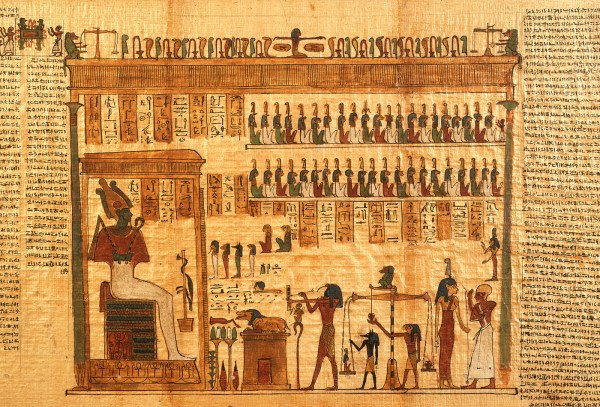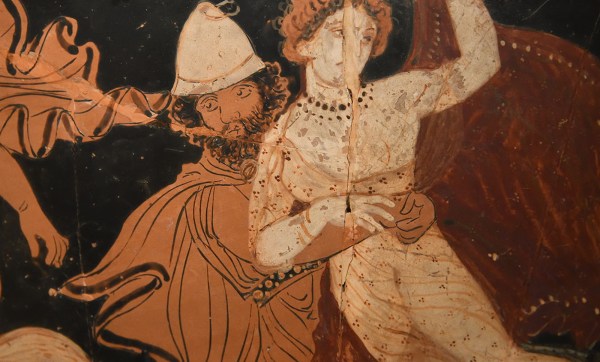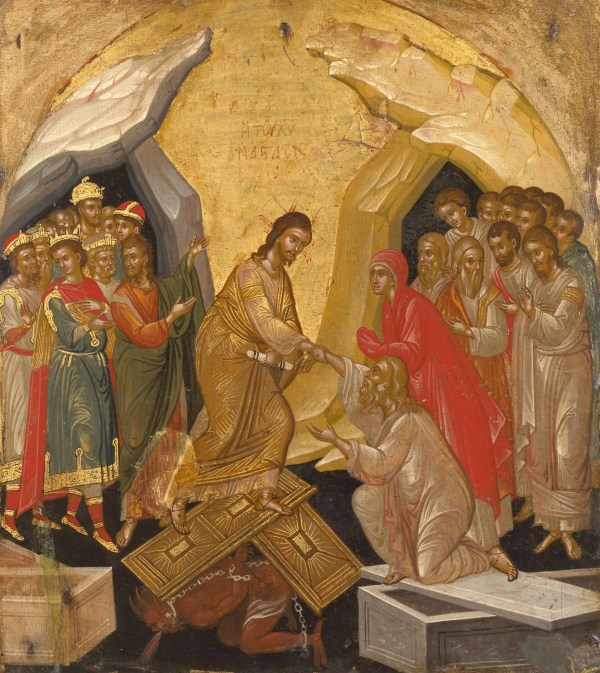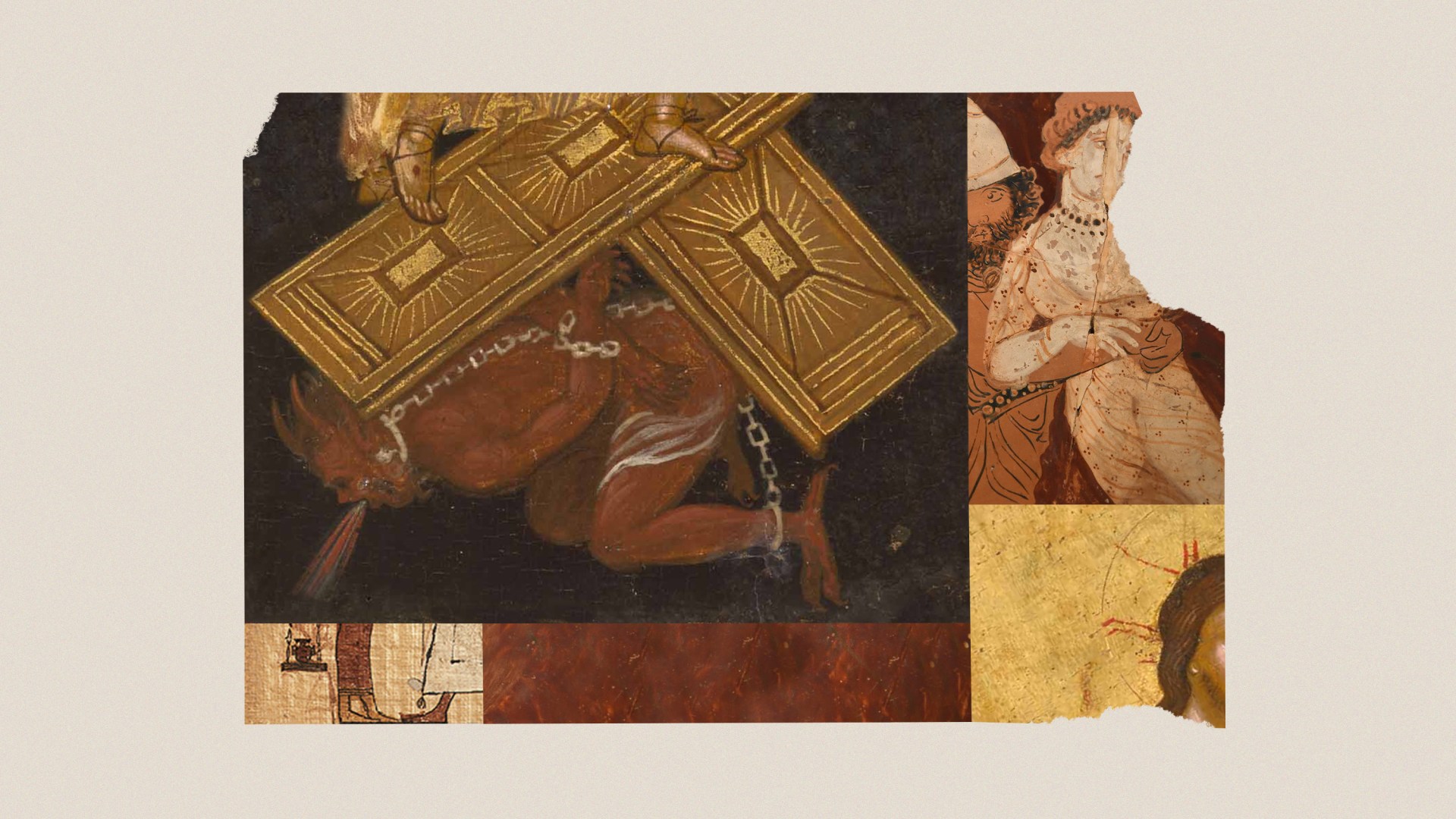If you’ve ever attended a liturgical church during Holy Week, you’ve likely recited the Apostles’ Creed—a confession that affirms the climactic events of Jesus’ life.
At the heart of this confession, between the phrases “was crucified, died, and was buried” and “on the third day he rose again from the dead,” you’ll find the mysterious (and some might say pesky) phrase “he descended into Hell.”
Although it’s largely overlooked in evangelical churches, dwarfed by the giants of Good Friday and Resurrection Sunday, Holy Saturday in the liturgical calendar commemorates the day when Jesus’ body laid dead in the grave. But it also honors the “Harrowing of Hell”—an idea that traces back to a handful of verses in the New Testament referring to Jesus’ debated descent into the netherworld.
After all, one verse reads, “What does ‘he ascended’ mean except that he also descended to the lower, earthly regions?” (Eph. 4:9). For “After being made alive, [Christ] went and made proclamation to the imprisoned spirits—to those who were disobedient long ago when God waited patiently in the days of Noah while the ark was being built” (1 Pet. 3:18–20). Later, Peter adds, “For this is why the gospel was preached even to those who are dead, that though judged in the flesh the way people are, they might live in the spirit the way God does” (1 Pet. 4:6, ESV).
That these (and other) verses imply that Christ descended into hell is an interpretation discarded by a number of respected Christian thinkers including Wayne Grudem and John Piper, who argues there’s “no textual basis” for it. Such dissenters either dismiss the line altogether or align themselves with John Calvin, who believed “the descent clause refers to Jesus’ physical and spiritual torment on the cross on Good Friday.”
Even among those who do believe in a literal descent, there’s a wide spectrum of views. Some people think Christ “raided hell to ransom the righteous of the Old Testament”—a view Scott McKnight says in a CT article is the “classical theology of Holy Saturday.” Others believe the above verses instead signal “a proclamation that Jesus’ victory extends all the way to the lowest regions in the place of the dead.”
Still others, particularly in the Eastern Orthodox tradition, see the Harrowing of Hell as part of the larger biblical narrative that Christ the conqueror defeats death completely and rescues many (or all) of the inhabitants of a now-dismantled Sheol. But this view has never been incorporated into the church’s official doctrine, since it can invite universalist interpretations—for instance, if the imprisoned spirits of 1 Peter 3 got a second chance, might others too?
To unpack all the ins and outs of theological debate over the centuries is beyond the scope of this article. But regardless of what you believe about the specifics of Christ’s descent, every confessing Christian believes that Christ was, in fact, dead in the grave. And this single biblically verifiable truth has just as much to say to those of us who still find ourselves in the land of the living.
Few (if any) mysteries have held more sway on the human imagination than the enigma of what follows our final breath on earth. What’s beyond the flat line of asystole—and to where do the departed depart? And while some today might feign a secular indifference, a quick glance through the oldest myths shows the near-universal concern our remotest ancestors had with understanding and preparing for death and the world of the dead.
But first, it’s important to note that the word hell has a confusing etymology—even as it has captivated the imaginations of people and literature throughout history.
 WikiMedia Commons
WikiMedia Commons WikiMedia Commons
WikiMedia CommonsMost ancient Near Eastern people groups left detailed accounts of their underworlds, including the Sumerians’ The Descent of Inanna, the Egyptians’ Book of the Dead, and the Greeks’ grim vision of Hades. By contrast, the only Hebrew word the Israelites had for hell was Sheol, which vaguely refers to a shadowy dwelling place for the dead. It shows up only 66 times in the Old Testament and is translated variously in our English Bibles as “the pit,” “the grave,” “the abyss,” and even “hell.” Sheol was translated to Hades in the Greek Septuagint, as opposed to Gehenna, the Greek word for a different compartment of the underworld seen as a place of judgment and destruction.
Epic poems like Dante’s Inferno (based on the Roman poet Virgil’s account of Aeneas’s descent into the underworld) famously paints a Christianized take on the Greco-Roman vision of Hades, which informed medieval plays and other depictions of the Harrowing of Hell. Christ’s descent echoes the mythic pattern of a heroic figure whose journey takes him into the underworld to discover a life-changing truth or to accomplish an impossible task—such as rescuing a dead beloved soul or setting captives free—and to return alive and victorious.
You can see this ancient narrative pattern (or “mytheme,” as comparative mythologists would say) in all sorts of different stories today, from The Matrix to Harry Potter. The ubiquitous presence of the mythic hero theme has been used by intellectual opponents of Christianity to diminish the uniqueness and significance of our faith claims about Jesus Christ.
In 1890, for instance, anthropologist and folklorist James George Frazer published the first edition of The Golden Bough, which captivated readers with his comparative retellings of myths. He claimed Jesus was just another example of the dying-and-rising-god myth to emerge from the mists of ancient pagan religion. And while scholars have long since dismissed most of Frazer’s speculative conclusions, his concepts live on in the works of Sigmund Freud, Carl Jung, Joseph Campbell, and many other secular thinkers influenced by this archetype.
Even today, modern skeptics of Christianity will use this rationale to reinterpret Jesus’ death and resurrection as nothing more than imitative elements of those ancient stories. Such parallels, they believe, negate the exclusivity of truth that Christians profess. And yet, at the same time, the similarities between pre-Christ myths and the story of Christ have also inspired the intellects and imaginations of some of the greatest Christian thinkers and storytellers of the 20th century.
In fact, in an infamous conversation on Addison’s Walk at Oxford’s Magdalen College, one agnostic-turned-theist named Jack (also known as C. S.) Lewis discussed these mythic connections with two believing friends, J. R. R. Tolkien and Hugo Dyson. Lewis realized that believing in the person of Jesus did not mean throwing away the old myths of ancient civilizations but rather finding in Christ the true and ultimate fulfillment of these myths. He later wrote:
Now the story of Christ is simply a true myth: a myth working on us in the same way as the others, but with this tremendous difference that it really happened: and one must be content to accept it in the same way, remembering that it is God’s myth where the others are men’s myths: i.e., the Pagan stories are God expressing Himself through the minds of poets, using such images as He found there, while Christianity is God expressing Himself through what we call ‘real things.’
This conviction pulsates through the writings of the Inklings, the group to which Lewis, Tolkien, Dyson, and a few others of the same ilk belonged. Like Dante, their works are filled with allusions to their mythological preoccupations, not least the “journey in the underworld” and “rescuing king” mythemes.
Think of the scene in Tolkien’s The Return of the King, where Aragorn, heir to the throne of Gondor, must enter “the Paths of the Dead” through gates inscribed with an eerie warning: “The way is shut. It was made by those who are Dead. And the Dead keep it, until the time comes. The way is shut” (emphasis added). There, the Dead Men are cursed to remain trapped under a mountain for their grave sin of oath breaking—waiting until the king returns to give them a second chance to fulfill their oath.
 WikiMedia Commons
WikiMedia CommonsThen, of course, there’s Lewis’s own The Great Divorce, where the narrator is driven from hell to heaven by a bus driver named George MacDonald—named after the 19th-century Scottish poet and novelist who profoundly shaped Lewis’ theology and storytelling, like Virgil did for Dante. Charles Williams, another (lesser-known) Inkling, even wrote a novel titled Descent into Hell—which brings us back to the Apostles’ Creed and the dying and rising pattern of Jesus Christ.
One difference in the “true myth” of Christ is that he calls his followers to imitate his pattern of dying and rising. Jesus tells his followers to deny themselves and take up their own crosses (Luke 9:23), or instruments of death, and Paul says to “Count yourselves dead to sin but alive to God in Christ Jesus” (Rom. 6:11). But like Christ’s death, ours is not without purpose. As Jesus said, “Very truly I tell you, unless a kernel of wheat falls to the ground and dies, it remains only a single seed. But if it dies, it produces many seeds” (John 12:24).
A more theological word for “dying to self” is mortification, as symbolized in the sacrament of baptism. A believer who is plunged into the waters symbolically dies with Christ while also dying to the sinful state of the flesh. Much like being “born again” (John 3:3), the Christian emerges from the waters, symbolically rising again in Christ’s conquering victory over sin and death. Thus begins the process of vivification, as the life of a believer is renewed in and for God.
In baptism, we reenact the path Jesus himself paved for us in his descent and return from the underworld through our own immersion and resurfacing. Jesus pierced the very belly of the beast of death in his journey from the grave to the right hand of God—traveling from the bed of Sheol to the heavens (Ps.139:8). With a love to match the scope of his heroic task, Christ tore the curtain of the temple so that the holiness of God could dwell in and among us through the church as the body of Christ.
The Harrowing of Hell reminds us of our Savior’s willingness to go before us as a seed, dying to bring forth an otherwise impossible fruit. But as we imitate and follow him, we encounter what can be the hardest part of the mortification and vivication process: patience. Just as as seeds can often lay dormant in the soil for months or even years before sprouting, the process of growing in sanctification involves waiting on God’s promise to make all things new (Rev. 21:5).
While God did not spell out for us the specifics of Jesus’ itinerary in hell, we can take heart as we face our own journeys into the valley of the shadow of death (Ps. 23:4), that Jesus, our true epic hero, has already gone before us and overcome the world (John 16:33). Christ alone is the true myth of human history—the dying and rising God incarnate who embodies every story’s truest thread. And in his faithfulness we can find, as the old hymn goes, “strength for today and bright hope for tomorrow.”
Raed Truett Gilliam is associate producer with CT media.















